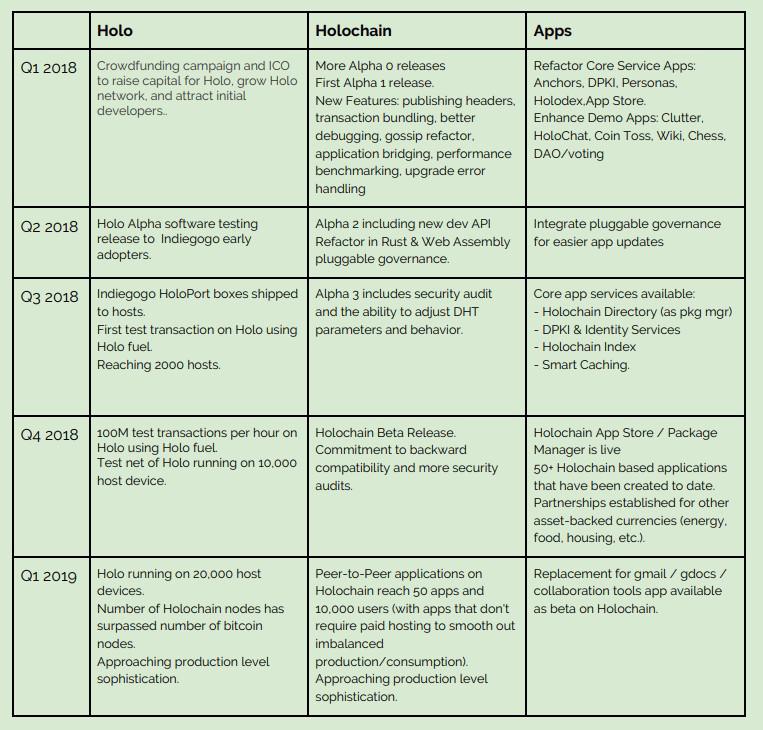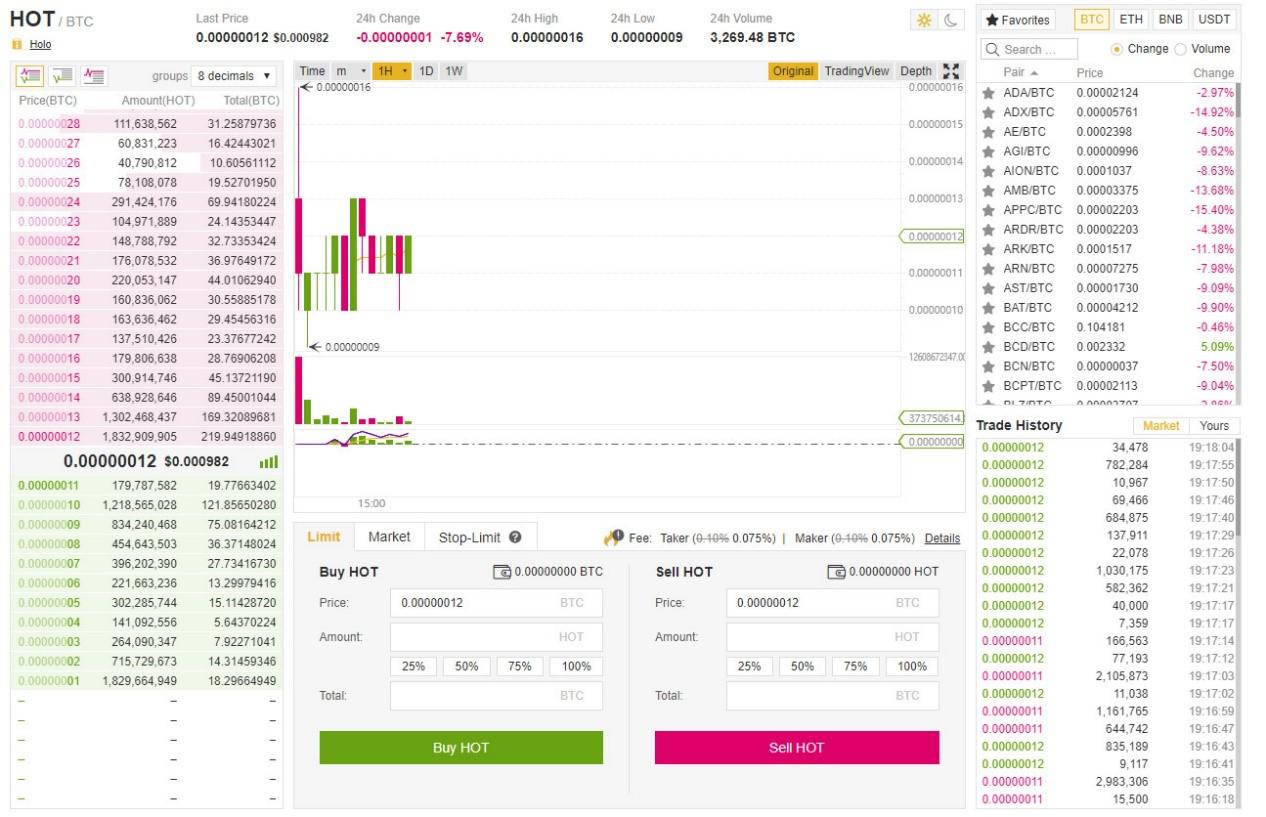Holochain (HOT) Review – An Open-Source Framework Alternative to the Blockchain
| Holochain Key Information | |
| Name | Holochain |
| Ticker | HOT |
| Total Supply | 177,619,433,541 |
| Category | Decentralized Hosting Platform |
| Initial Price | $0.0002 |
| Website URL | Go to Holochain.org |
| White Paper URL | Read Holochain WhitePaper |
Holochain is an open-source framework for building decentralized, peer-to-peer applications that is an alternative to the blockchain. Its long-term goal is to create an uncloseable carrier for doing interaction that is completely peer-to-peer. In other words, a decentralized system for agency, autonomy and security. Holochain believes that this is not available today and that blockchain technology does not meet this need.
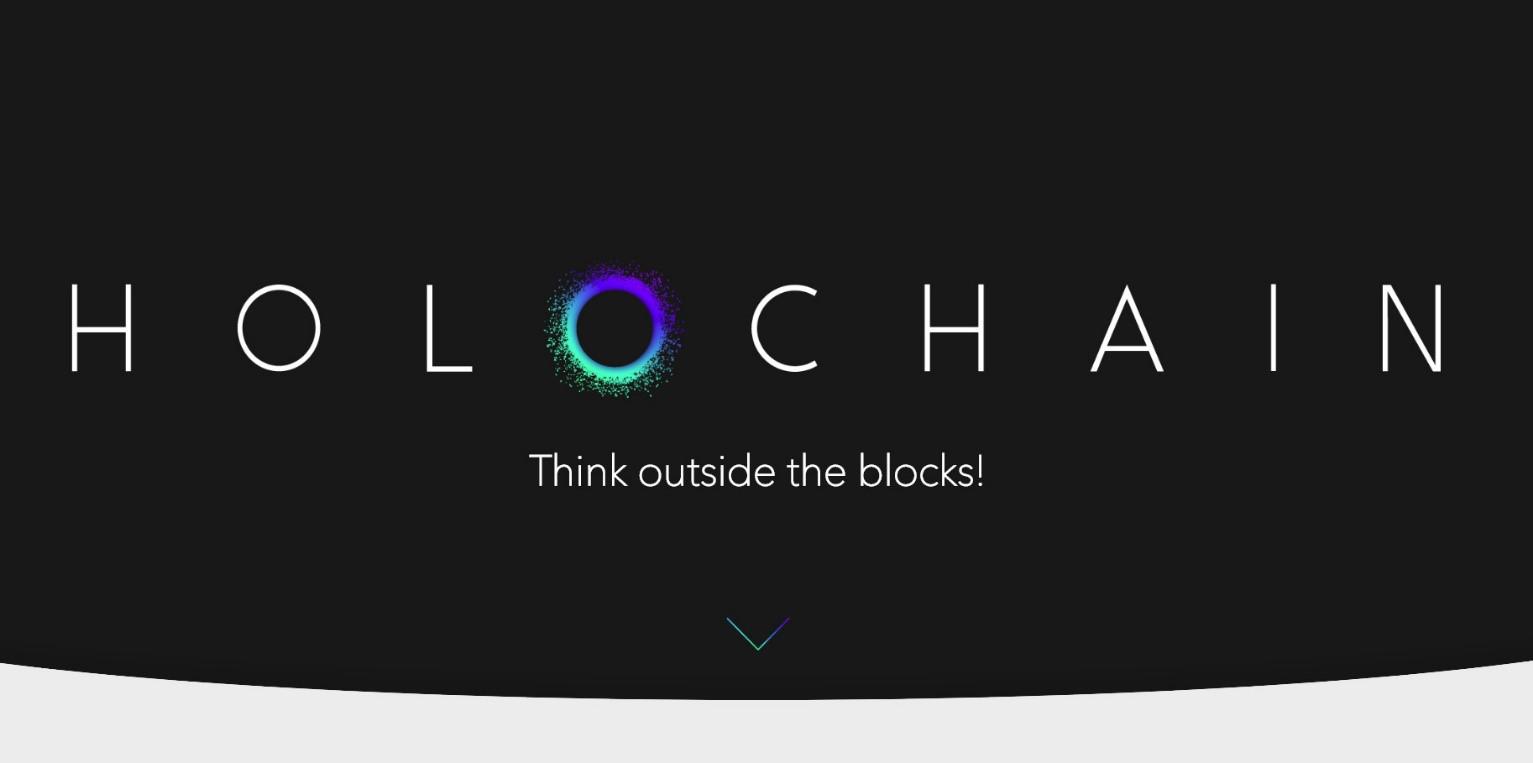
The Idea and the Team Behind Holochain
Holochain argues that blockchain is duplicating a pattern that is unsustainable. Among their arguments, they feel that although it claims to be decentralized, it is actually centralized, since it puts power in the hands of the miners. In addition, blockchain is not really scalable, and it consumes more than 0.1% of the world’s electricity. Most importantly, Holochain believes that the cryptoworld is actually repeating the same mistakes that earlier corrupted global financial markets: a concentration of wealth and power in the hands of a few, creating volatile markets.
“Cryptocurrencies do not have to be gambling tokens created from nothing. They can be responsibly connected to assets, promises, or real-world value. They don’t have to re-create all the speculative money problems that they were supposed to be solving,” explains Arthur Brock, co-founder of Holochain. “We need to build healthier patterns in being able to be stewards of the planet. The question is do we have the intelligence on the collective level to be able to coordinate these things. The tools that we have for coordination, all the code and communications, are on carriers that are encloseable – carriers that can be intercepted, that can be constrained and controlled,” he says. Encloseable carriers usually lead to concentrations of power, which is why Holochain’s main goal is to create an unencloseable carrier for doing communication interaction.
In line with their ideology, Holochain has developed Holochain, a new version of the internet that allows users to connect together while escaping the centralized structures, without the bottlenecks and massive computing overhead. Its open-source software allows users to host applications using their excess processing power from their smartphone or computer. In return for sharing, users receive Holochain Fuel, the company’s token. Holochain combines hashing, digital signatures, and Distributed Hash Table (DHTs) to form a tamper-proof distributed ledger. Rather than a public ledger of the blockchain, Holochain’s accounting system is based on traditional double-entry bookkeeping.
Arthur Brock and Eric Harris-Braun are the co-founders of Holochain and creators of Holochain. They have been designing alternatives currencies since the 80’s and have been working on Holu since before the Bitcoin whitepaper was written.
To protect the incentives of users, funders and developers, Holochain is owned by a non-profit foundation.
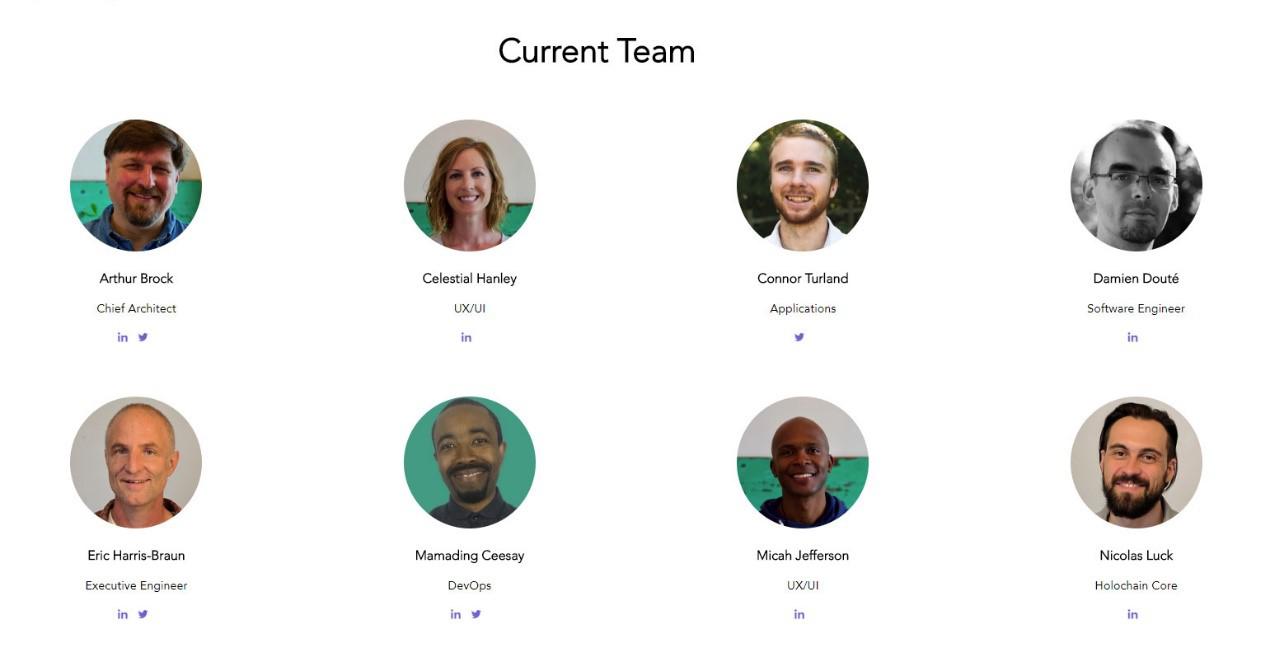
The company’s advisory team also includes Ryan Bubinski, the co-founder of CodeAcademy.
IOST is funded by a Singapore non-for-profit organization called the Internet of Service Foundation, which is under the management of a group of blockchain experts, software programmers, distributed system scientists, and tech enthusiasts.
Holochain Partnership
In June, Holochain announced a new strategic partnership with Promether, an Adaptive Symbiotic Platform (ASP) that implements all the networking, security and anonymization code applications need to protect their data, returning full control into the hands of the users. Its roadmap includes establishing more partnerships for other asset-backed currencies (energy, food, housing, etc).
HOT Token Price History
Holochain’s ICO was from March 29 to April 28, 2018. The initial ICO price was $0.0002. At the beginning of May, it rose to $0.001. After Holochain was listed on Binance on July 24, the token rose to $0009.
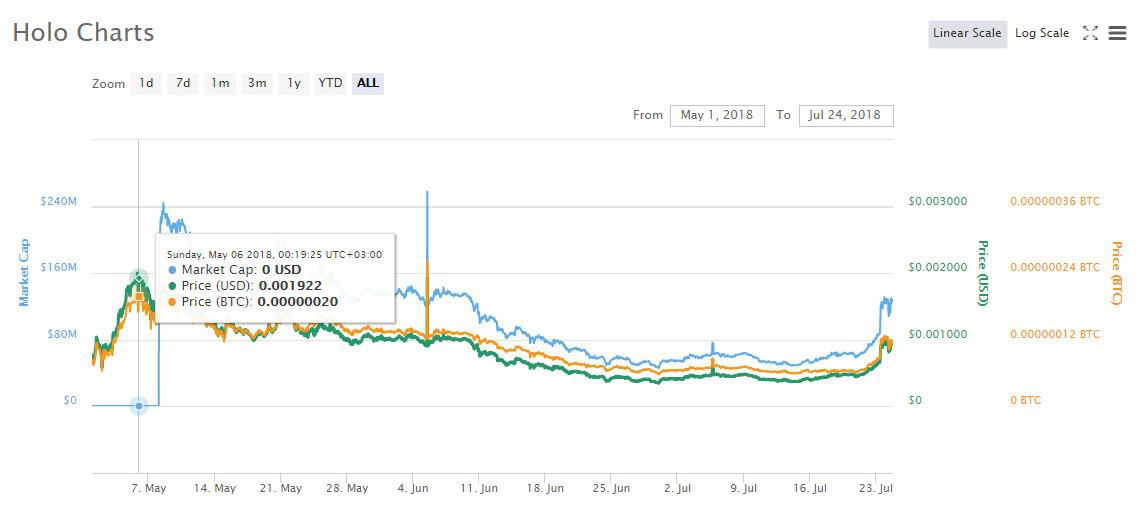
The Holochain Technology
Holochain’s technology was designed with a number of constraints for its currency system:
- It should cost less in computer cycles and fees than the original computing and funds being counted
- It must support millions of transactions per second (TPS) as well as account for service provision in batches, similar to Visa (an estimated 56,000 TPS)
- It must optimize its market value of its units in relation to the cost of hosting, steadily and in a stable, preferably growing over time
Holochain’s ecosystem relies on hosts to provide processing and storage for distributed applications, while at the same time earning redeemable credits. In contrast with blockchain solutions and other cryptocurrencies, Holochain has declared that it has already delivered a full distributed platform in Holochain. Its goal now is mass adoption.
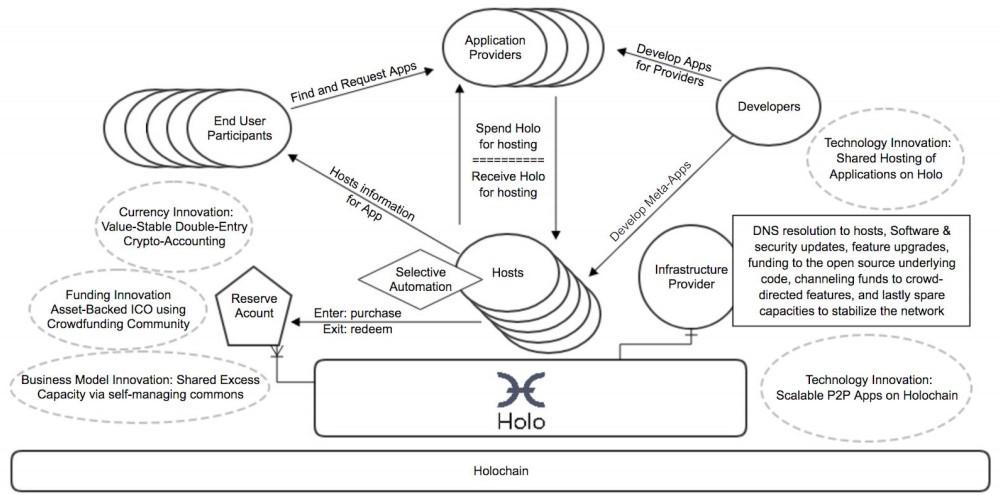
Scalable DApps
Holochain enables data sharing and validation protocols that allow mass P2P applications to function. It may be helpful to think of it as similar to git repositories for each agent that can be published, shared synchronized or merged via a BitTorrent-like Distributed Hash Table (DHT).
Blockchain vs. Holochain
Holochain’s technology is unique in terms of its approach, energy usage, volume, scalability, platform and efficiency.
Here is a comparison of the two technologies:
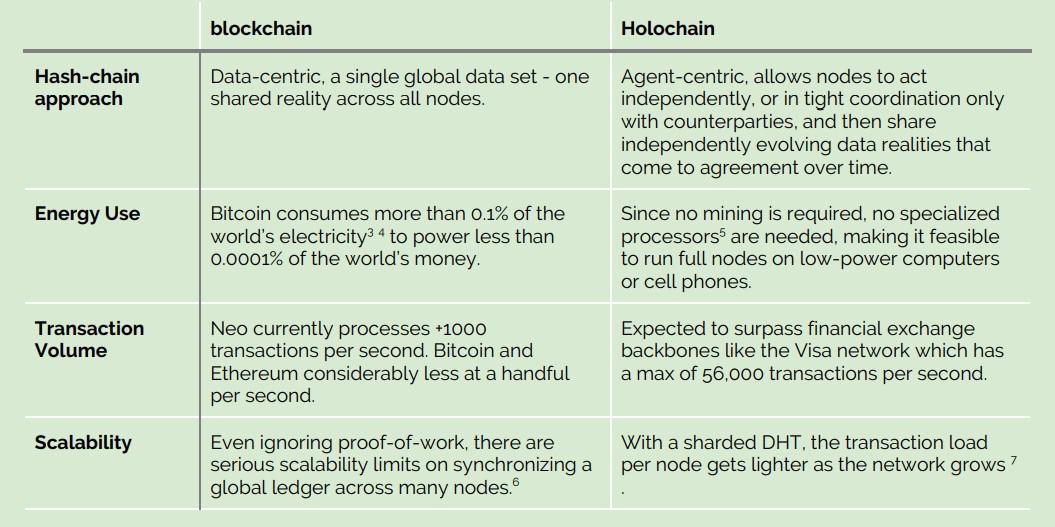

The HOT Token
Holochain’s ERC-20 token was sold during its Initial Community Offering but were announced in their Green Paper to have no further use than conversion in the form of Holochain fuel. Instead of a traditional ICO like the cryptocurrency assets, Holochain chose to use its Initial Community Offering to presell hosting credits, making the crowd stakeholders in the project and its future. The allocation of the tokens was split: 25% was distributed to the organization and team, the remainder 75% was distributed to the community.
Those who purchase a Holochain hosting box to host their own apps and data can do so and earn Holochain fuel in return for sharing space and computer power, hosting apps for others. That means that if the price of Holochain fuel rises significantly, users have more of an incentive to connect to the Holochain network. Holochain hosts receive payment in return for providing hosting to mainstream users who use Holochain’s browser instead of installing Holochain. Anyone providing hosting directly from Holochain’s servers is also paid in Holochain credits as well.
The Holochain fuel is stable in value because it is backed by computing power. As such, it is priced in computer units: processing time, bandwidth, and storage. It is unique in that it is asset-backed, it does not use tokens or coins, and transactions are counter-signed by both parties. This also contributes to its stability as well as its ability to rise in value.
How to Purchase HOT
The main exchange for purchasing HOT is on Binance, which currently has the largest exchange of the currency. HOT can be traded on Binance for BTC and ETH. At the moment the current daily volume of HOT traded on Binance is over $35 million.
HOT is also available on the following exchanges:
- IDEX (Trade HOT with ETH on IDEX)
- Hotbit (Trade HOT with ETH on Hotbit)
- Fatbtc (Trade HOT with ETH on Fatbtc)
- LATOKEN (Trade HOT with ETH on LATOKEN)
- Radar Relay (Trade HOT with WETH on Radar Relay)
In addition to these exchanges, Upbit recently listed IOST. Upbit is Korea’s biggest exchange.
How to Store HOT
HOT can be stored in any wallet that supports ERC-20 tokens such as Coinomi, MetaMask and MyEtherWallet.
For maximum security, however, you should store your HOT on hardware wallets such as Ledger Nano S.
HOT will be swapped with Holochain fuel on a 1:1 ratio after the Holochain-based application is ready.
Roadmap and Future Plans
Holochain has an extensive roadmap which it has outlined in its Green Paper published in March. The roadmap includes crowdfunding and ICO of Holochain in Q1 of 2018, the target for 2000 hosts in Q3 of 2018, and most ambitiously, the surpassing of bitcoin nodes with Holochain nodes by Q1 of 2019. It also aims to run Holochain on 20,000 host devices.
The hosting network, Holochain, will launch in Q3 of 2018. At that time, you can exchange your HOT tokens for Holochain fuel.
